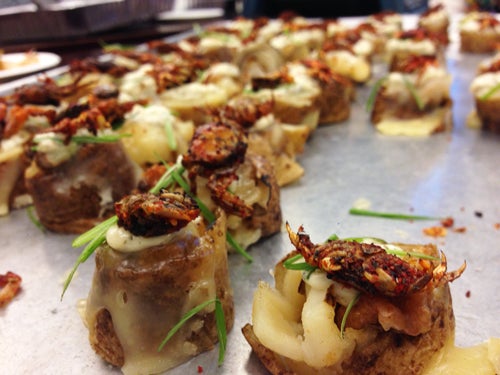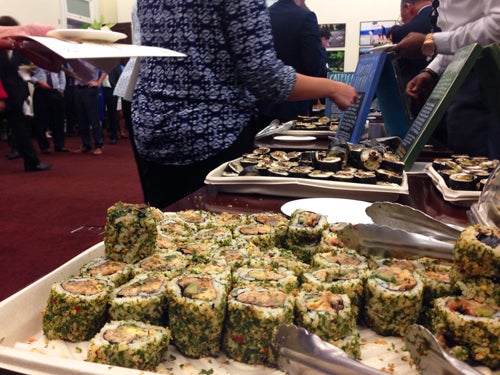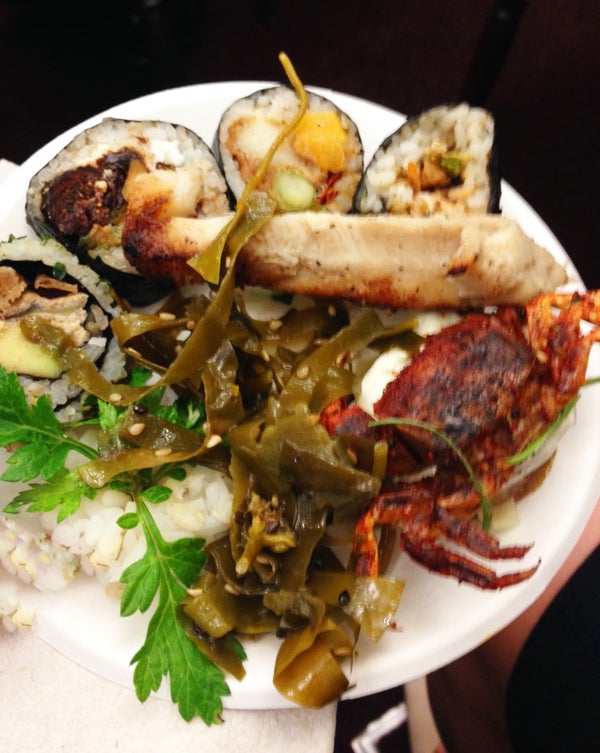This article was published in Scientific American’s former blog network and reflects the views of the author, not necessarily those of Scientific American
Last Friday, the White House held an event honoring 12 leaders in sustainable seafood. These “Champions of Change” represented a variety of sectors of the seafood industry. Linda Behnken, executive director of the Alaska Longline Fishermen’s Association is also founding member of the Alaska Sustainable Fisheries Trust, an organization dedicated to promoting healthy fisheries and helping young Alaskans overcome barriers to becoming fishermen.
Another honoree, Native Hawaiian Luka Mossman, works to preserve traditional practices in Hawaii’s ancient fish ponds, while incorporating modern science and management practices. The other Champions included fishermen, researchers and entrepreneurs working to improve the success, accessibility, and health of U.S. fisheries, and the economies that depend on them.
We hear a lot of doom and gloom when it comes to our oceans, but sometimes there are indeed good reasons for celebrations like the one last week. A September report from the Center for American Progress (CAP) described the history and future of the Magnussen-Stevens Act (MSA), the 1976 law that ultimately established 10 national standards for U.S. fisheries management. The report authors point to the MSA-mandated science-based management measures, and conclude, “Americans can make a strong case that their fisheries are better managed than those of any other nation in the world.”
On supporting science journalism
If you're enjoying this article, consider supporting our award-winning journalism by subscribing. By purchasing a subscription you are helping to ensure the future of impactful stories about the discoveries and ideas shaping our world today.
The MSA shows us what can happen if we commit to using science to inform policy governing management of our natural resources. Dr. Jane Lubchenco, former NOAA Administrator and current U.S. Science Envoy for the Ocean at the Department of State, said in her remarks at the White House event: “We know that when we manage fisheries for the benefit of both fishermen and fish, we can truly have a win-win outcome. The dramatic turnaround of U.S. fisheries is perhaps the greatest unappreciated environmental success story of the decade.”
Lubchenco pointed to a one-third decrease of overfished stocks and a 10-fold increase in the number of recovered fish stocks during the Obama administration’s tenure. But these gains, while promising, are still being made in the face of a steep, deep decline. And, ocean management can only truly work if fisheries are accountable, and management is implemented based upon up-to-date, accurate science. Reports from conservation organization Oceana (full disclosure-I contributed to these) have described continuing problems with bycatch, fraud, and a lack of traceability, all of which are standing in the way of a return to ocean abundance and biodiversity.
As Christy Goldfuss, Head of the White House Council on Environmental Quality said at the event, “Though we’ve made great strides, more work needs to be done.” That the White House was honoring “champions of change, ” is telling. The status quo is not enough. Americans eat nearly 5 billion pounds of seafood every year, and about 90 percent of that is imported from other countries, many of which don’t have the same standards for fisheries management that we do.
And even though fisheries-wise, we may be the best in the world, we aren’t anywhere near our full potential. In his book “The Perfect Protein,” Oceana CEO Andy Sharpless paints a picture of American waters practically overflowing with fish. Historic accounts of obscenely large cod landings; clams and lobsters so common and cheap they were used as bait and pig feed; New England inlets so dense with fish one could nearly use them to walk across the water—these stories illustrate the bounty that awaits if we properly care for our seas.
But a return to such abundance will not only involve continued strengthening of current management practices, it will also require a change in the way we think about food from the sea. Enter Chef Bun Lai.
The lone chef among this year’s honorees, Lai runs Miya’s Sushi in New Haven, CT. Miya’s offers a unique seafood experience, which he brought with him to Washington last Friday, to share with some of the event attendees and other guests later in the evening. Lai’s creations incorporate ingredients meant to ease pressure on the oceans—invasive species, abundant species, traditionally unwanted parts (bones , skin, etc.), and plants and sea vegetables.

Credit: PATRICK MUSTAIN
Guests at the dinner ate lionfish sashimi, smoked Asian carp ribs, and rolls featuring Chesapeake blue catfish—all fish wreaking havoc on the ecosystems they have overrun. Another invader perched atop potato rolls, crispy and fried whole: Asian shore crabs that have been outcompeting the traditional inhabitants of the northeastern U.S. coastline. The “Thimbleweed salad” featured roasted sesame seasoned kelp noodles grown near the Thimble Islands in Long Island Sound. Kelp soaks up carbon dioxide as well as nutrients from agricultural runoff like nitrogen and phosphorus, and so helps mitigate climate change and ocean pollution.
It felt really good to eat a delicious meal that was actually helping the oceans.
While introducing the dishes, Lai described people he knew who had grown up in New Haven, with Miya’s as their only point of reference for sushi. He said they’d tell him how surprised they’d be after visiting sushi restaurants elsewhere. “That’s not sushi!” he said they’d lament, referring to what most of us think of as sushi: tuna, eel, salmon (likely farmed)—less sustainable options that Lai leaves off his menu.

Credit: PATRICK MUSTAIN
I smiled when he shared this, because funny enough, that’s exactly what I said the first time I went to Miya’s years ago when I lived in New Haven. I wanted my spicy tuna roll, dammit. But in subsequent visits I learned that what chef Lai is doing is important (and well executed!). Americans have become used to eating a boringly small variety seafood that comes from far away, and is caught or produced in ways that often damage the planet.
In our back yard are the best-managed fisheries in the world. We have tools like Monterey Bay Aquarium’s Seafood Watch app to help us seek out the best choices—those populations that are abundant and well-managed, or even those species that by eating we’re doing the ocean a favor. Bun Lai and chefs like him are beginning to show us so many more options than shrimp, salmon, tuna and the like; that there is so much more to fish than the filets, the steaks, the big cuts. There are tiny, plentiful, super-nutritious fish, pesky invasive crustaceans, ocean-cleaning mollusks, and a surprising array of sea vegetables, all waiting to be gobbled up. The buffet awaits, and it’s not just boring ol’ fish sticks any more.
Healthy oceans are astoundingly productive, and they can feed us, if we take care of them. That will take continued, rigorous, science-based management, but it will also require us to think beyond the spicy tuna roll.
